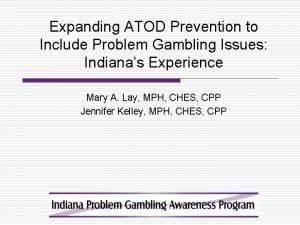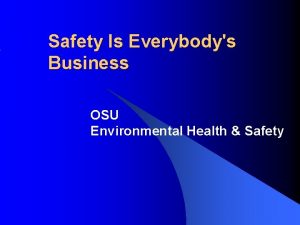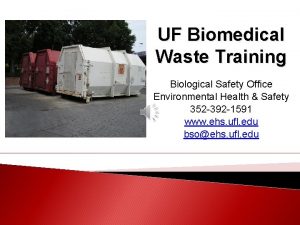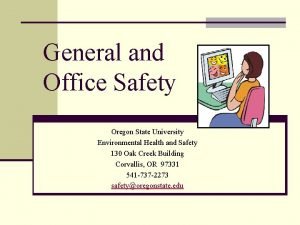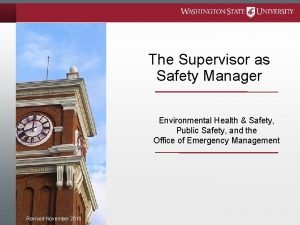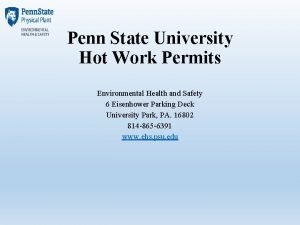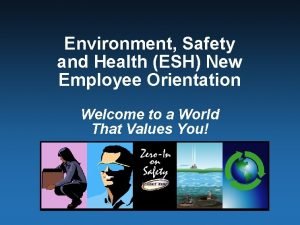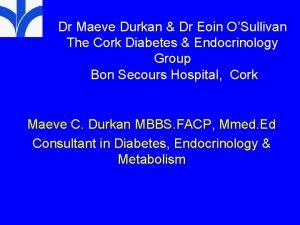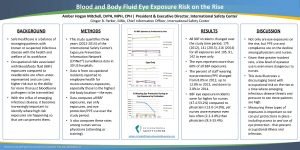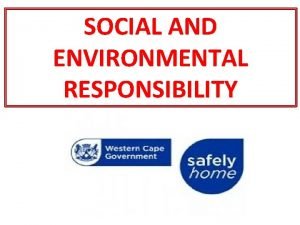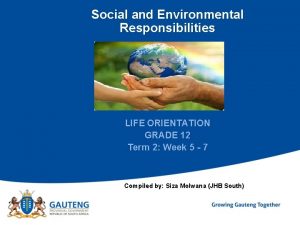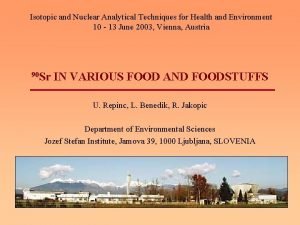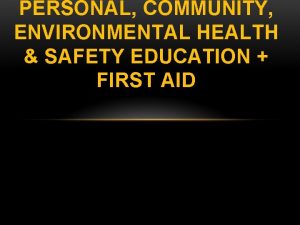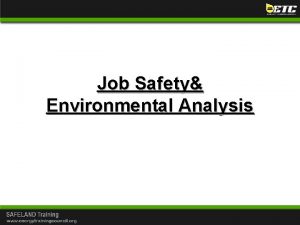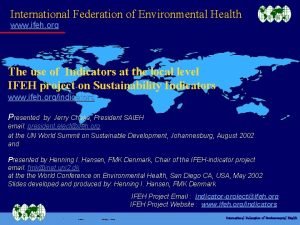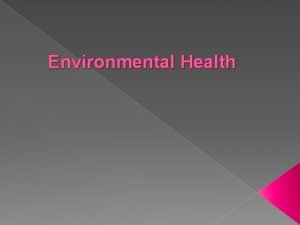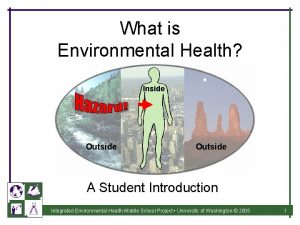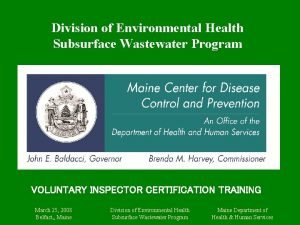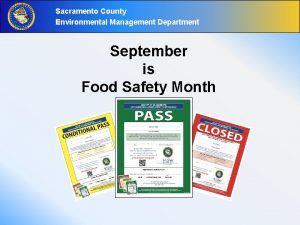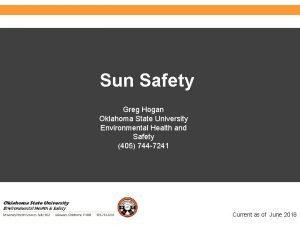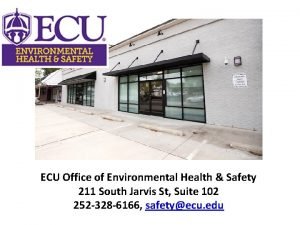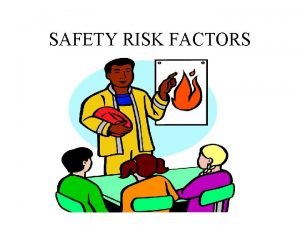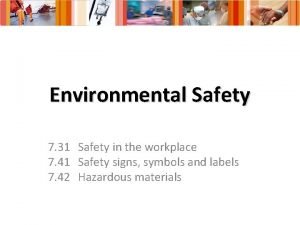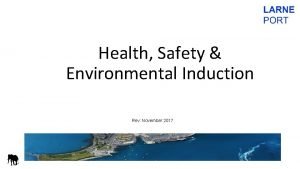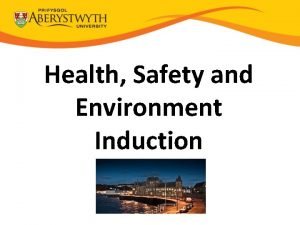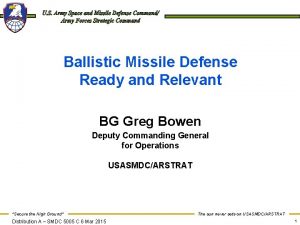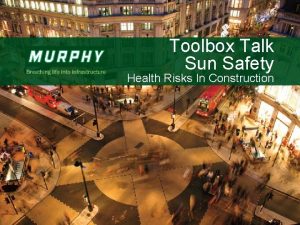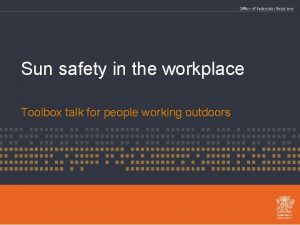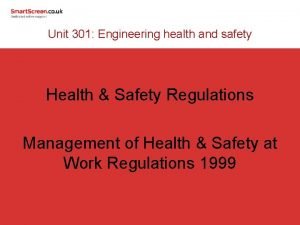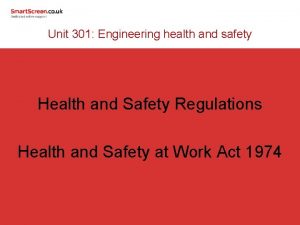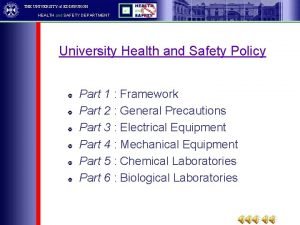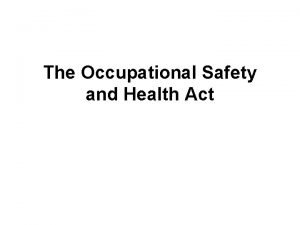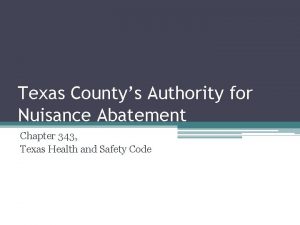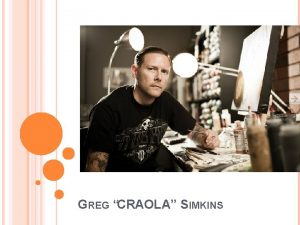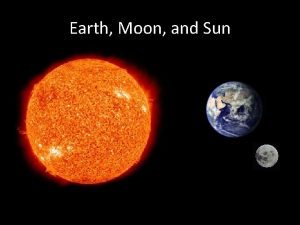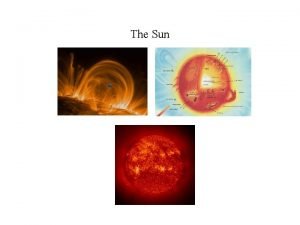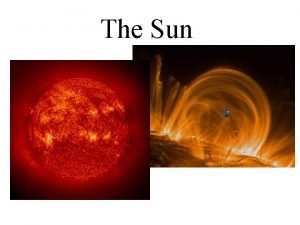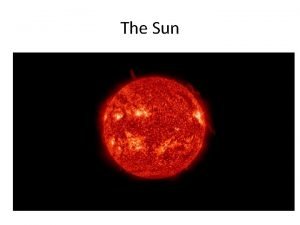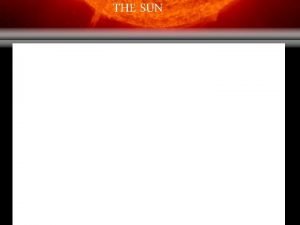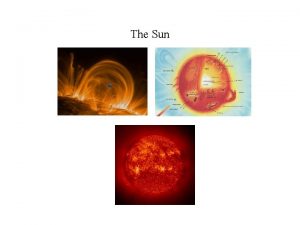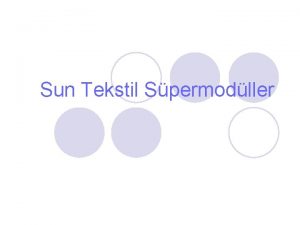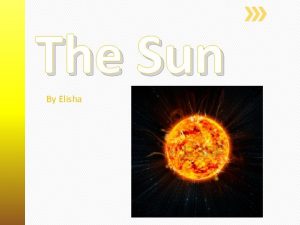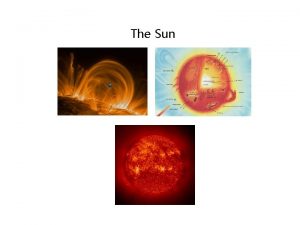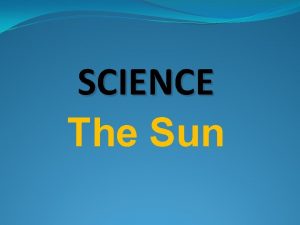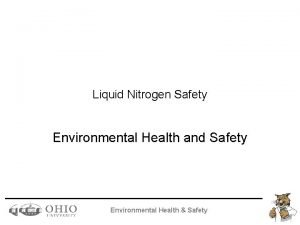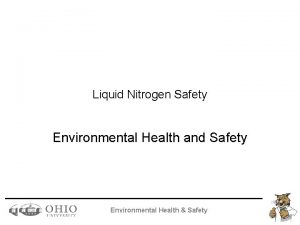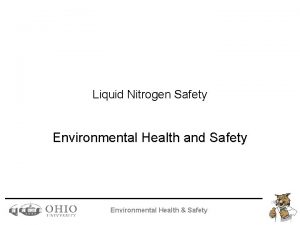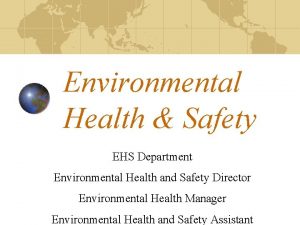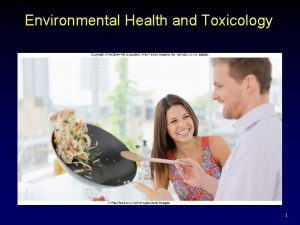Environmental Health and Safety Sun Safety Greg Hogan
































































- Slides: 64

Environmental Health and Safety Sun Safety Greg Hogan Oklahoma State University Environmental Health and Safety (405) 744 -7241 Current as of June 2018

Environmental Health and Safety Objective • The Skin Cancer Problem • The Sun and Your Skin • Assessing Your Personal Risk • Practicing Sun Safety • Spotting skin cancer early • Sun Safety and Employees

Environmental Health and Safety Skin Cancer Problem

Environmental Health and Safety Skin Cancer Prevention is Now!

Environmental Health and Safety Skin Cancer Facts • Skin cancer is the most common cancer in the U. S. • There are > 2 million new cases of skin cancer each year. • One in five Americans will get skin cancer. • Men get skin cancer about twice as often as women. Source: American Cancer Society

Environmental Health and Safety Melanoma Facts • 75, 000 cases of melanoma will be diagnosed this year. • There will be about 9, 000 melanoma deaths. • Melanoma increased 45% in the U. S. from 1992 to 2004. • THE MOST COMMON cancer for young adults (25 -29). Sources: American Cancer Society & National Cancer Institute

Environmental Health and Safety UV and Skin Cancer Facts • Ultraviolet radiation is a carcinogen. • UV causes 90% of all skin cancer. • UV can be natural -- from the sun. • UV can be artificial -- from tanning lamps.

Environmental Health and Safety UV is a Carcinogen Asbestos Vinyl chloride Chromium compounds Radon Ultraviolet Radiation Benzene Arsenic National Toxicology Program Department of Health & Human Services

Environmental Health and Safety The Sun: Benefits and Harms BENEFITS: • • Heat Light Photosynthesis Outdoor environment for physical activity • Production of vitamin D • Happy & positive feelings; good mood HARMS: • • • Suntan Sunburn Premature aging Freckles Liver spots Wrinkles Loss of elasticity Cataracts Suppression of immune system Skin cancer

Environmental Health and Safety What Can You Do? • Understand the connection between UV rays and skin cancer • Know your personal risk • Practice sun safety • Be a role model for others

Environmental Health and Safety The Sun and Your Skin

Environmental Health and Safety UV and The Electromagnetic Spectrum

Environmental Health and Safety UVA and UVB Radiation Solar UV radiation is 95% UVA & 5% UVB. UVA causes tanning, aging & skin cancer. EPIDERMIS SUBCUTIS UVB causes burning & skin cancer. Tanning beds emit 12 times more UVA than the sun. Skin cancers occur in the epidermis.

Environmental Health and Safety How Skin Cancer Starts • All cancers develop because of abnormal cell growth. • Skin cancer develops because of abnormal growth of our basal, squamous or melanocyte cells.

Environmental Health and Safety How Skin Cancer Starts • UVA and UVB rays hit the epidermis. • DNA in skin cells begins to break down.

Environmental Health and Safety How Skin Cancer Starts • The breakdown causes the cells to grow out of control and form a mass of cancer cells. • The immune system tries to repair the damage. • More sun exposure hampers repair. • Damaged cells can mutate into skin cancer within 5 years.

Environmental Health and Safety

Environmental Health and Safety Types of Skin Cancer • Non-melanoma Skin Cancer • Basal Cell Carcinoma • Squamous Cell Carcinoma • Malignant Melanoma

Environmental Health and Safety Basal Cell Carcinoma

Environmental Health and Safety Squamous Cell Carcinoma

Environmental Health and Safety Malignant Melanoma Larger Odd Shape Varied Color

Environmental Health and Safety Lessons Learned: Ban the Burn! • Studies have shown that FIVE severe sunburns early in life may DOUBLE the risk for developing melanoma later in life. • Avoid getting burned!

Lessons Learned: There’s No Such Thing as a Healthy Tan Environmental Health and Safety • A suntan is your skin’s way of trying to protect itself from damaging UV rays. • Suntans give very little protection - about an SPF 3. • Skin gets damaged while getting a tan, including aging from UVA rays and cumulative lifetime exposure.

Environmental Health and Safety Most Skin Cancer is Preventable • Know your risk • Practice sun safety • Examine your skin

Environmental Health and Safety Assess Your Risk for Skin Cancer

Environmental Health and Safety Understanding Your Risk Your risk of getting harmed from over-exposure to UV is determined by: Who You Are Your Personal Risk Where You Live What You Do

Environmental Health and Safety Who You Are: The Six Skin Types I. III. IV. V. VI. Always burns, never tans, sensitive to sun exposure Burns easily, tans minimally Burns moderately, tans gradually to light brown Burns minimally, always tans well to moderately brown Rarely burns, tans profusely to dark Never burns, deeply pigmented, least sensitive

Environmental Health and Safety Highest Risk Factors • • Blond or red hair Blue, green or gray eyes Fair skin Skin that freckles easily Skin that burns easily and doesn‘t tan Many moles; large moles Family members with melanoma Male

Environmental Health and Safety

Environmental Health and Safety Where You Live: • Sunny days. • High elevation: UV intensity increases 5% every 1000 feet above sea level. • An outdoor-oriented lifestyle.

Environmental Health and Safety What you do: Outdoor Workers • Get up to 8 times more UV than indoor workers • Have a 60% greater risk of developing skin cancer • Are at higher risk for nonmelanoma skin cancer • Indoor workers are at higher risk for melanoma

Environmental Health and Safety Reflective Work Surfaces • • • Flowers & lawn grass: 1 -2% Clay soil: 4 -6% Aged asphalt roadway: 5 -9% Light concrete: 10 -12% Weathered aluminum: 13% Sand: 15 -18% Water: 20 -25% White metal oxide house paint: 22% Fresh snow: 88%

Environmental Health and Safety What else do you do ? ? ? • Do you sunbathe to get a tan? • Do you use tanning lamps? • Do use sun protection?

Environmental Health and Safety Think Sun Safety!

Environmental Health and Safety Checklist for Sun Safety • Monitor UV • Use Shade • Cover Up –Clothes –Sunglasses –Hats • Apply Sunscreen

Environmental Health and Safety Monitor UV • Check the UV Index for high UV days. • Watch the clock for peak UV hours of 10: 00 am to 4: 00 pm. • Check the weather; Clouds block only 20% to 40% of UV. • Arrange work around peak sun hours if possible.

Environmental Health and Safety Use Shade • Bring portable shade cover to your job site. • Attach a shade device to your road equipment. • Seek shade structures or umbrella tables for breaks. • Go indoors for lunch or meetings. • Work inside during peak sun hours. • If you work in a car or truck, the glass blocks UVB, but not all UVA.

Skin Cancer and Driving Environmental Health and Safety • More UV-related melanoma skin cancer occurs on the left side of the body in the US • The left arm is more affected than the right arm • An open window increases UV dose 5 X more than a closed window

Environmental Health and Safety Cover Up • • • Long Sleeves Long Pants Sunglasses Hats Gloves

Environmental Health and Safety Photo-damaged Skin

Environmental Health and Safety Sun Protective Clothing • • Clothing can block 100% of UVA and UVB. Wear clothing that covers a large amount of your skin. Wear long-sleeved shirts and long pants. Choose fabrics with a tight weave that allows little or no light to pass through. • A thin white t-shirt has an SPF of about 4. • Wear darker colors because they absorb more UV.

Hats Environmental Health and Safety Less Sun Safe • • Choose wide-brimmed hats. But, any hat is better than NO hat! More Sun Safe

Environmental Health and Safety Sunglasses • UV can cause cataracts, macular degeneration, blindness and melanoma of the eye. • Wear large sunglasses that block 99%100% of UV rays. • Look for lenses labeled UV 400 or ANSI Z 80. 3. • Lenses don’t have to be dark or expensive.

Environmental Health and Safety Apply Sunscreen • • • Lotion Gel Stick Towelette Make up Lip balm

Environmental Health and Safety New FDA Rules (Effective December, 2012) • Broad Spectrum Protection – certified to protect against UVA. • Can longer use: Sunblock, Waterproof, All Day Protection, Sweat Proof. • Reapply every 2 hours. • Water Resistant – 40 or 80 minutes.

Environmental Health and Safety Sunscreen Basics • Choose SPF 30 or more for working outdoors. • Use a broad spectrum sunscreen for UVA and UVB. • Make sunscreen a daily habit. • And don’t forget lip balm with SPF 15 or more.

Environmental Health and Safety What is SPF? • SPF = Sun Protection Factor • SPF tells you how much UV will be absorbed or reflected. • SPF also tells you how long a sunscreen will protect your skin from sunburn. • SPF is a measure of UVB protection, not a measure of UVA protection.

Environmental Health and Safety Strength of Protection • • • SPF 15 screens 93% of UVB SPF 30 screens 97% of UVB SPF 50 screens 98% of UVB SPF 70 screens 98. 5% of UVB SPF 100 screens 99% of UVB • No sunscreen blocks 100% of UV.

Environmental Health and Safety Length of Protection x Your Time To Burn Without Protection SPF of your sunscreen = ____ MINUTES OF PROTECTION Examples (fair skin): 12 minutes x SPF 15 = 180 minutes (3 hours) until sunburn 12 minutes x SPF 30 = 360 minutes (6 hours) until sunburn 12 minutes x SPF 45 = 540 minutes (9 hours) until sunburn

Environmental Health and Safety Two Types of Sunscreen Chemical UV Absorbers • Chemicals that work like a sponge on your skin to absorb UV for a set amount of time • Need time to bond with skin; do not work right away • Harder to rub off Physical Reflectors • Tiny metals that work like aluminum foil to reflects UV away from your skin • Don’t need time to bond with skin; work right away • Easier to rub off Both work well; use what you like.

The Rule of Two Fingers: How Much Sunscreen to Apply Environmental Health and Safety

The Rule of Two Fingers: Where to Apply Sunscreen Environmental Health and Safety

How to Apply Sunscreen Environmental Health and Safety • Apply it about 15 -30 minutes before going out in the sun. • Apply it on all exposed skin, but not open wounds. • Don’t forget places like ears, neck and hands. • Don’t rub it in too hard – it reduces effectiveness by at least 25%.

Environmental Health and Safety When to Reapply • Reapply after 20 minutes to cover missed spots. • Reapply every two hours to keep it powerful. • Reapply more often after sweating.

Environmental Health and Safety Sunscreen and DEET Mosquito Repellant • Use separate products • Apply sunscreen first; then repellant • Reapply sunscreen often; don’t reapply repellant (25% DEET should last 5 hours)

Environmental Health and Safety Practice Early Detection

Environmental Health and Safety Detect Skin Cancer Early • At least 95% of skin cancer can be cured if detected early. • Look for changes in spots or moles. • Look for sores that don’t heal. • Report unusual findings to your doctor.

Environmental Health and Safety Check Your Self !

Environmental Health and Safety Know Your ABCDE’s for Moles A=Asymmetry: One half of the mole or birthmark doesn't match the other. B=Border: The edges are ragged, irregular, or poorly defined.

Environmental Health and Safety ABCDE Rule Continued C=Color: Color varies from one area to another and may have differing shades of brown, black, white, red or blue. D=Diameter: Area is larger than 6 mm (about the size of a pencil eraser) and is growing larger. E=Evolving: Show any changes in size, color, shape or texture of a mole (or any skin changes) to your doctor. -- American Academy of Dermatology

Environmental Health and Safety Take Aways • Some UV exposure is healthy, but avoid over-exposure, sunburns and suntans. • Limit your unprotected time in the sun, especially during peak UV hours at midday in the summer. • Find shade or bring it with you. • Use sunscreen with SPF 30 or higher every day. • Wear cover-up clothing, hats and sunglasses. • Don’t use tanning beds or lamps. • Check your skin for changes every year

Environmental Health and Safety Sun Safety Apps • There are some great products available to provide information on expected UV from the sun. • EPA’s Sun. Wise UV Index App • https: //itunes. apple. com/us/app/epas-sunwise-uvindex/id 466052686? mt=8 • Robocat Ultraviolet UV Index • https: //itunes. apple. com/us/app/ultraviolet-uvindex/id 445874481? mt=8&ign-mpt=uo%3 D 4

Environmental Health and Safety Programs and Services –Fire Protection Engineering –Life Safety & Emergency Preparedness –Environmental Compliance –Laboratory Safety –Occupational Health and Medical Surveillance –Materials Management –Industrial Hygiene –Chemical Hygiene –Safety Training Location: University Health Services Bldg, Room 002 (basement) Phone number: 744 -7241 Email: EHS@okstate. edu Website: http: //ehs. okstate. edu/

Environmental Health and Safety Questions ?
 Greg hogan lehigh
Greg hogan lehigh Osu ehs training
Osu ehs training Uf bloodborne pathogen training
Uf bloodborne pathogen training Oregon state ehs
Oregon state ehs Wsu environmental health and safety
Wsu environmental health and safety Ehs psu
Ehs psu Esh environmental safety health
Esh environmental safety health Conjoined twins trishna and krishna
Conjoined twins trishna and krishna Elyse hogan
Elyse hogan Brigade system
Brigade system Maeve hogan
Maeve hogan Timothy hogan photographer
Timothy hogan photographer Declan hogan chef
Declan hogan chef Hogan's fountain cherokee park
Hogan's fountain cherokee park Salty brigade
Salty brigade Suny central administration
Suny central administration Robin hogan
Robin hogan Maeve durkan
Maeve durkan Cwv-101 origins
Cwv-101 origins Plains indians tipi
Plains indians tipi Nicola hogan
Nicola hogan Susan hogan rotunda
Susan hogan rotunda Basic kitchen procedures
Basic kitchen procedures Dr luke hogan
Dr luke hogan Andrew hogan forrester
Andrew hogan forrester Gabrielle hogan-brun
Gabrielle hogan-brun Joe hogan openet
Joe hogan openet The immortal hulk hogan
The immortal hulk hogan Amber hogan mitchell
Amber hogan mitchell Wireless health
Wireless health Health social and environmental responsibility
Health social and environmental responsibility Social environmental responsibility
Social environmental responsibility Health and environmental sciences institute
Health and environmental sciences institute Personal community and environmental health
Personal community and environmental health Job safety and environmental analysis
Job safety and environmental analysis Health and social care component 3 health and wellbeing
Health and social care component 3 health and wellbeing International federation of environmental health
International federation of environmental health Define enviromental health
Define enviromental health Precautionary principle
Precautionary principle Environmental health student
Environmental health student Environmental health
Environmental health San diego department of environmental health
San diego department of environmental health Caribbean environmental health institute
Caribbean environmental health institute Sacramento county environmental health
Sacramento county environmental health Abcde rule
Abcde rule Ecu environmental health
Ecu environmental health Environmental safety
Environmental safety Environmental safety
Environmental safety No work prior to safety/environmental induction sign
No work prior to safety/environmental induction sign No work prior to safety/environmental induction sign
No work prior to safety/environmental induction sign Greg and the ballistic missile
Greg and the ballistic missile Toolbox talk sun safety
Toolbox talk sun safety Toolbox talk sun safety
Toolbox talk sun safety Difference between health promotion and health education
Difference between health promotion and health education Chapter 3 health wellness and health disparities
Chapter 3 health wellness and health disparities Difference between health education and health propaganda
Difference between health education and health propaganda Glencoe health chapter 1 understanding health and wellness
Glencoe health chapter 1 understanding health and wellness Understanding your health and wellness chapter 1
Understanding your health and wellness chapter 1 Unit 301
Unit 301 Health and safety at work act engineering
Health and safety at work act engineering Health and safety edinburgh
Health and safety edinburgh Objectives of osh
Objectives of osh Care certificate health and safety
Care certificate health and safety Texas health and safety code 343
Texas health and safety code 343 Six pack health and safety regulations
Six pack health and safety regulations
